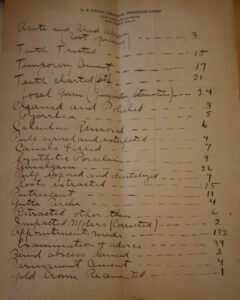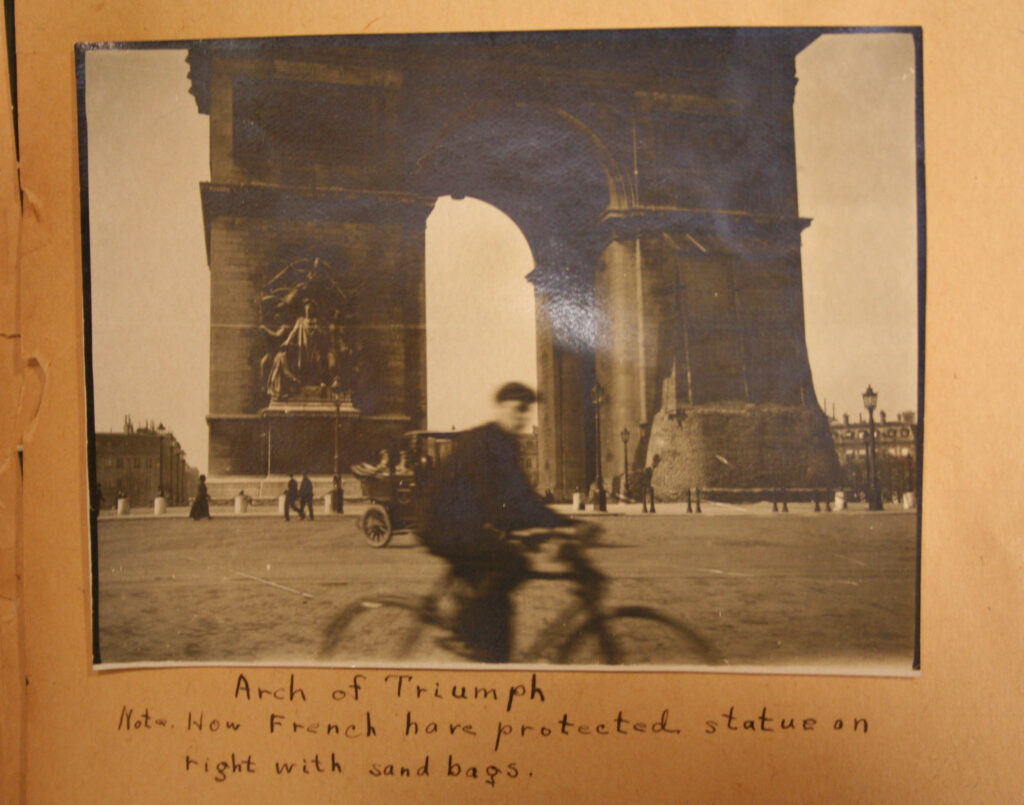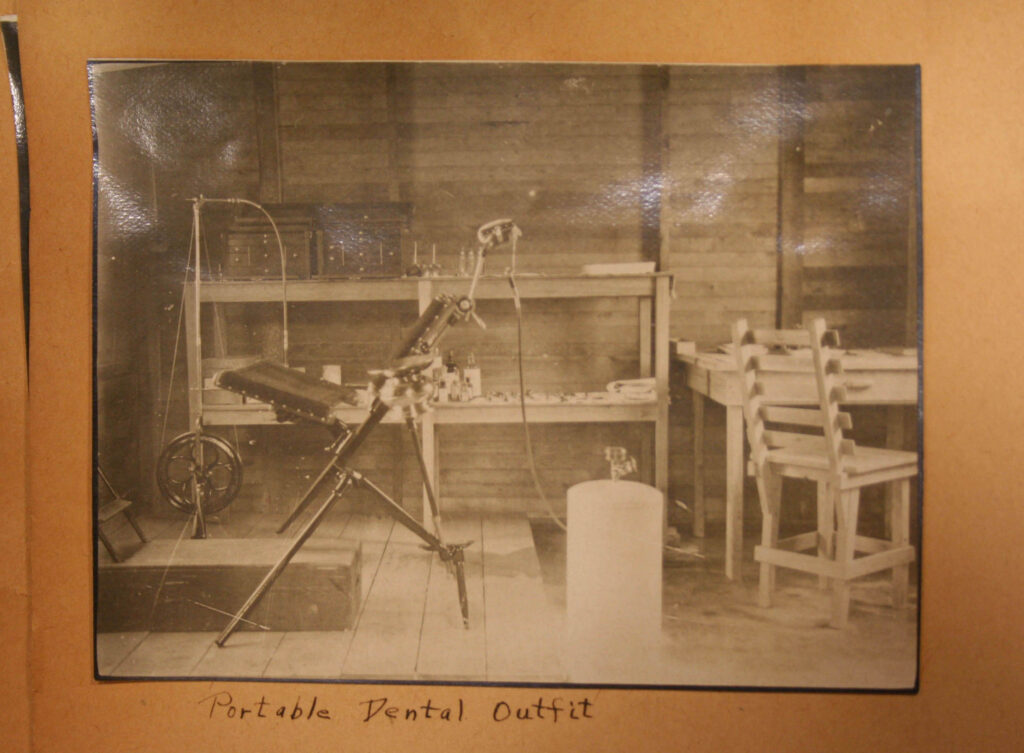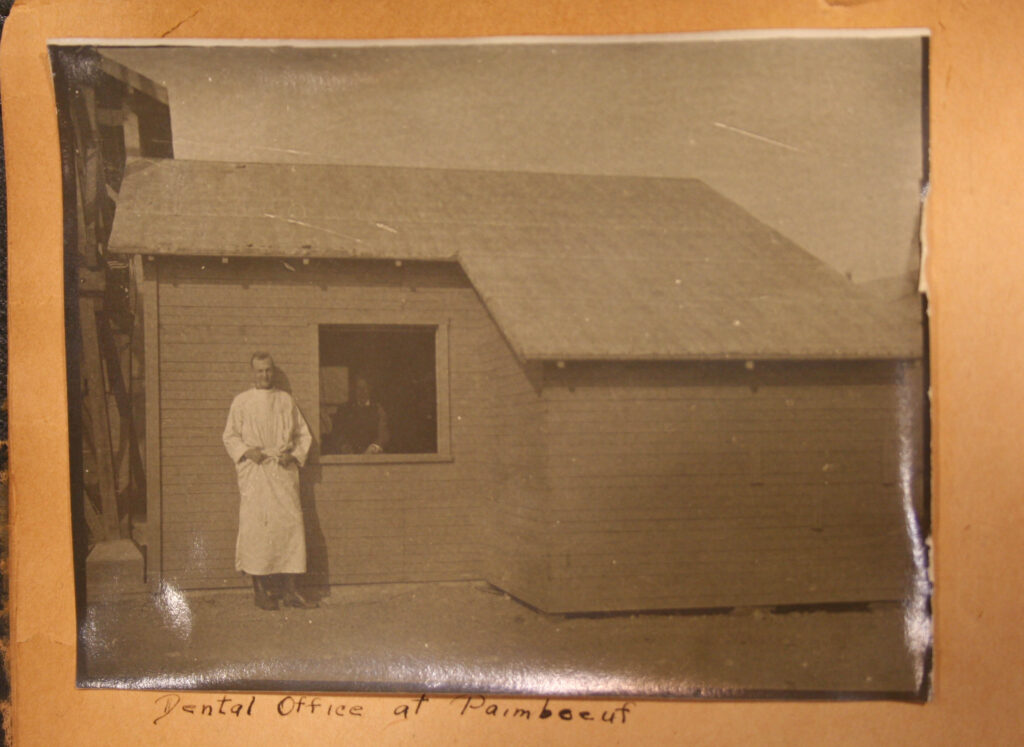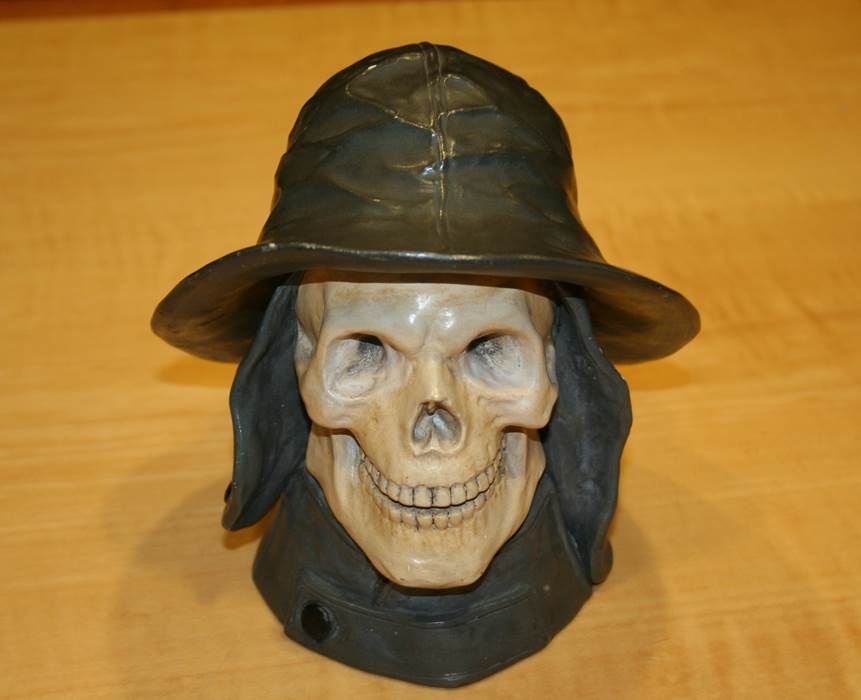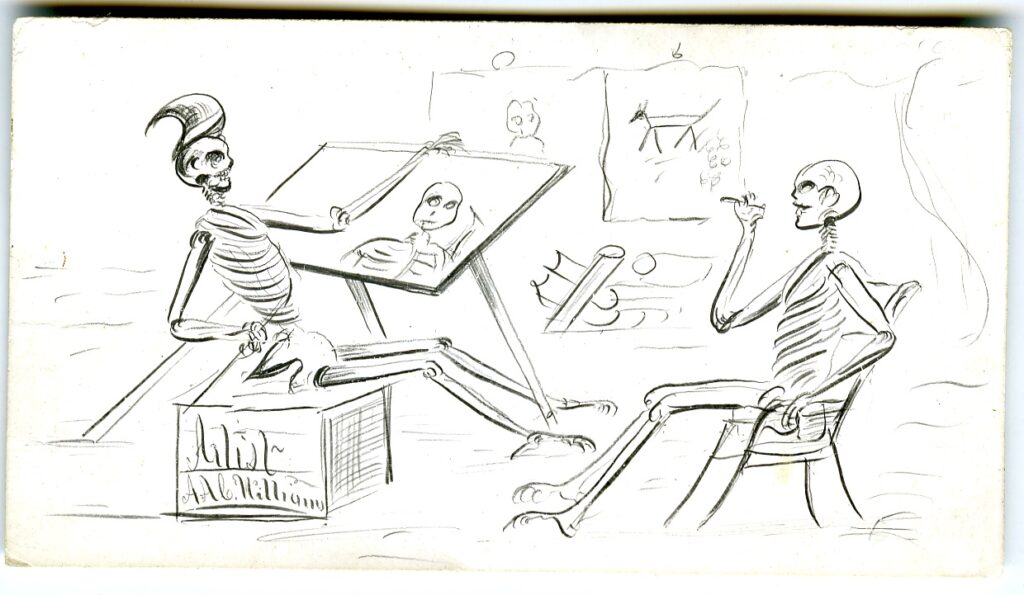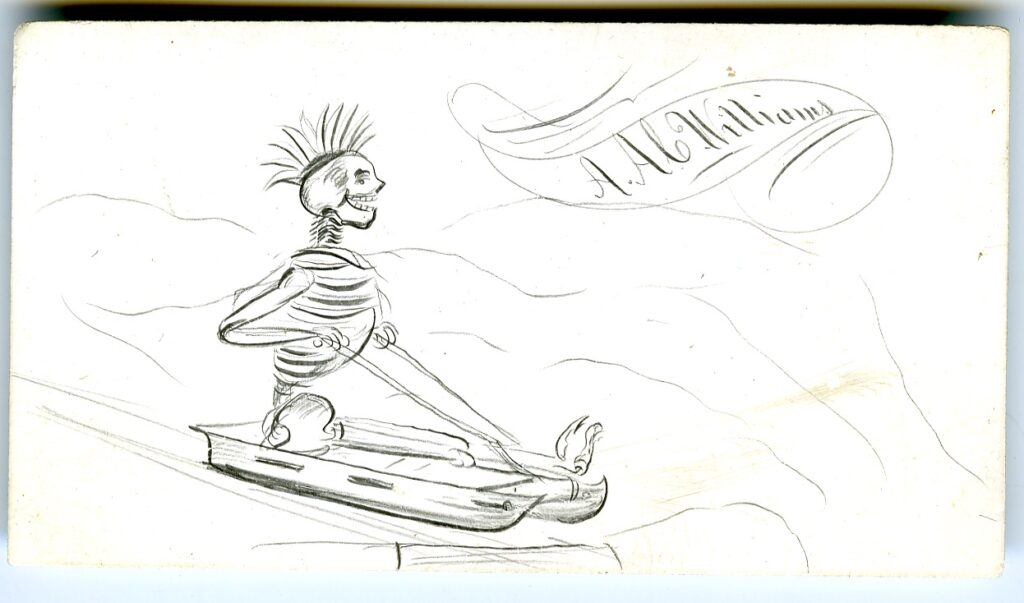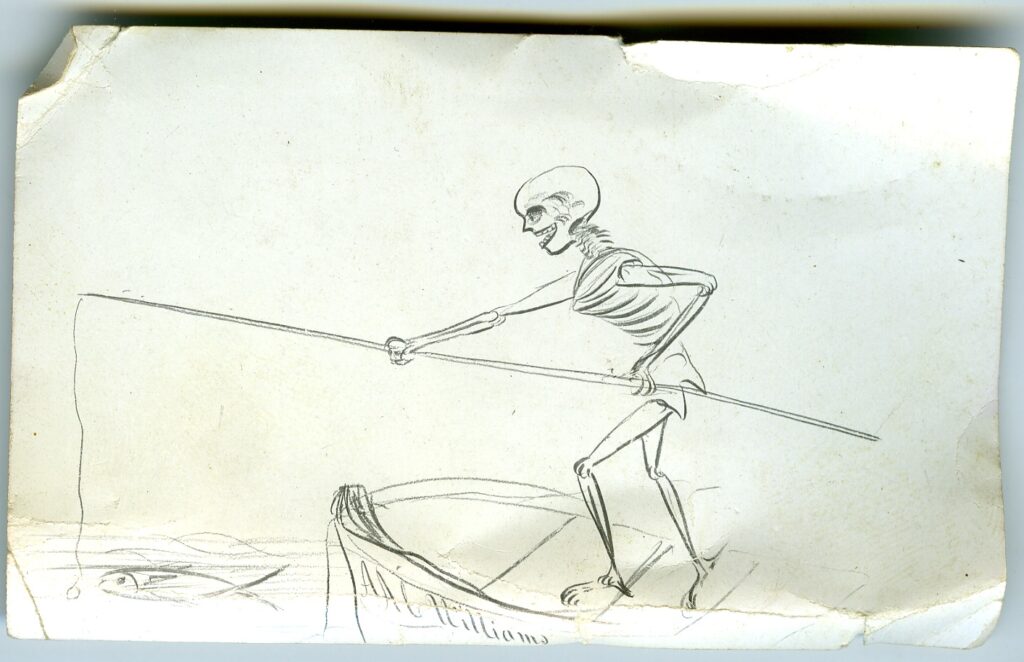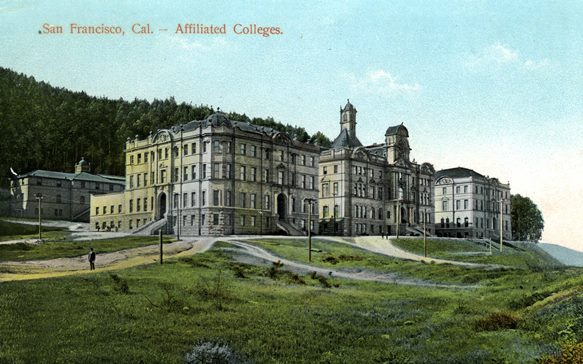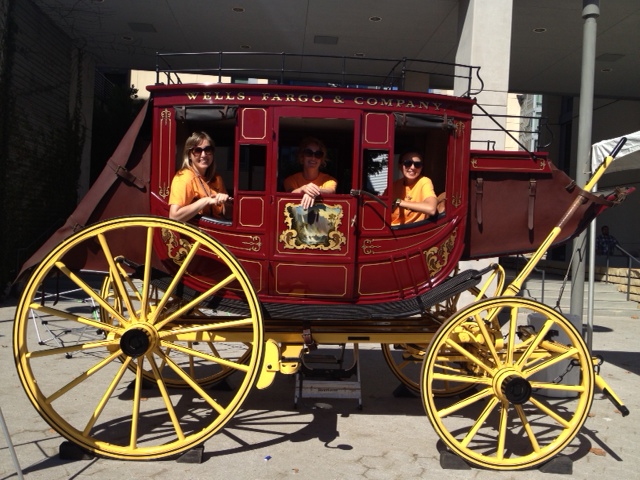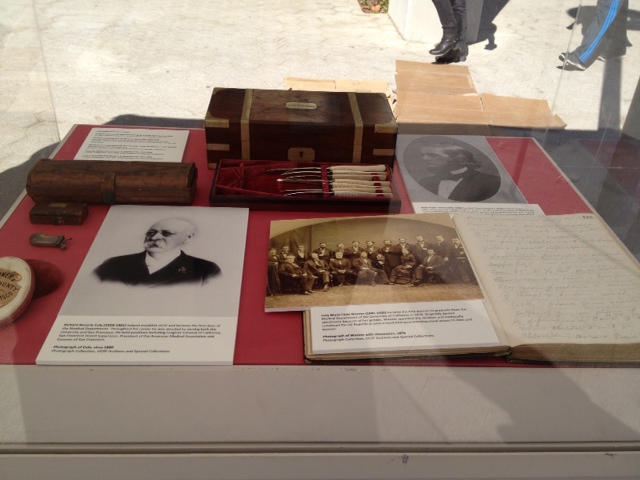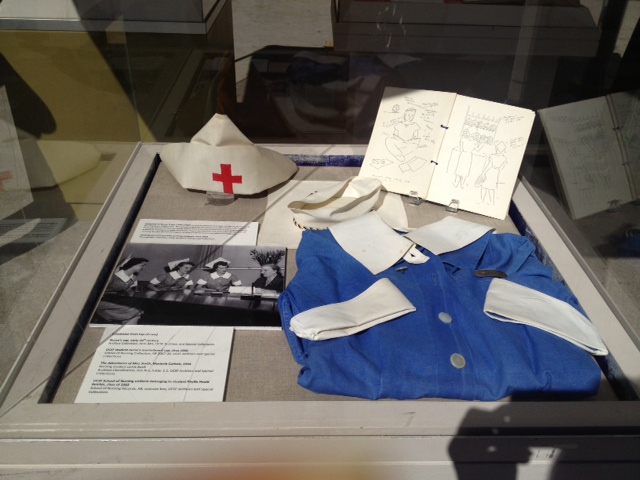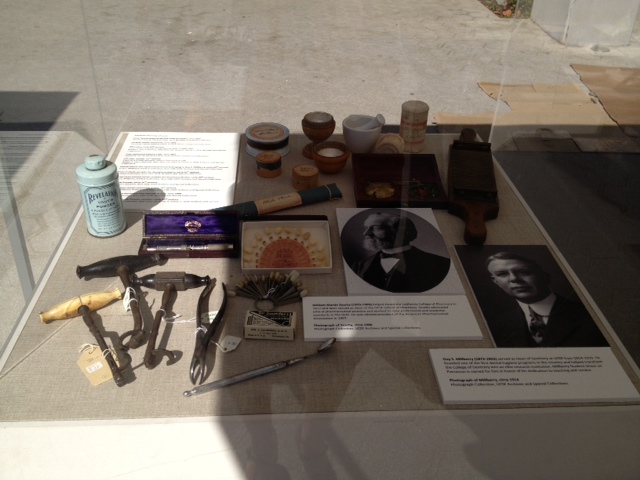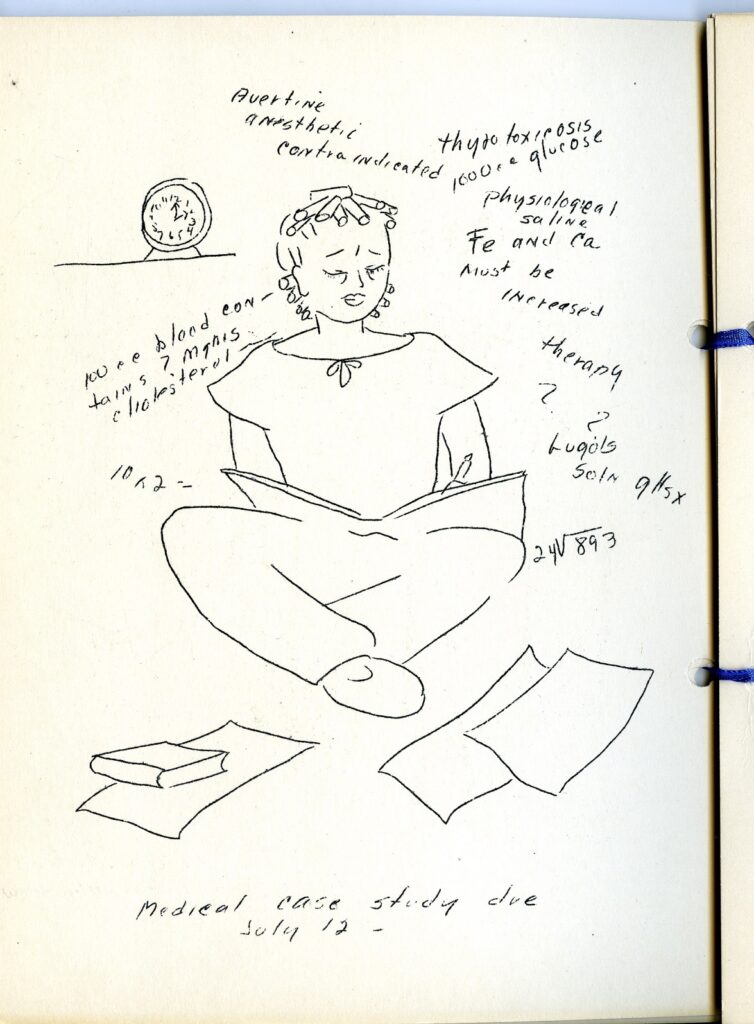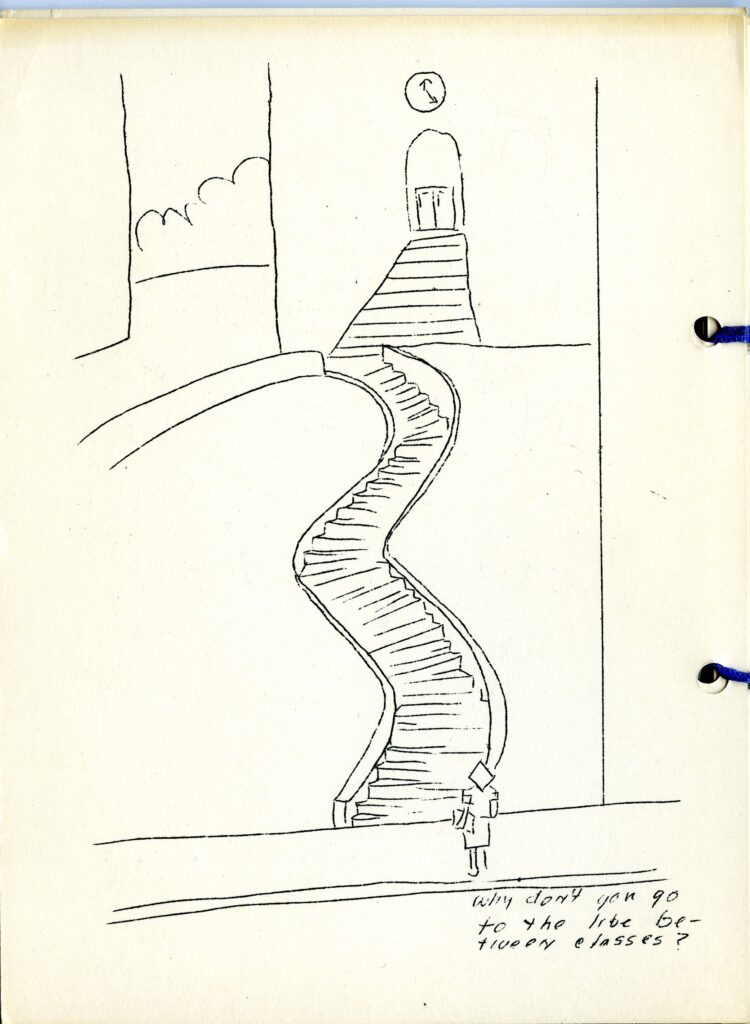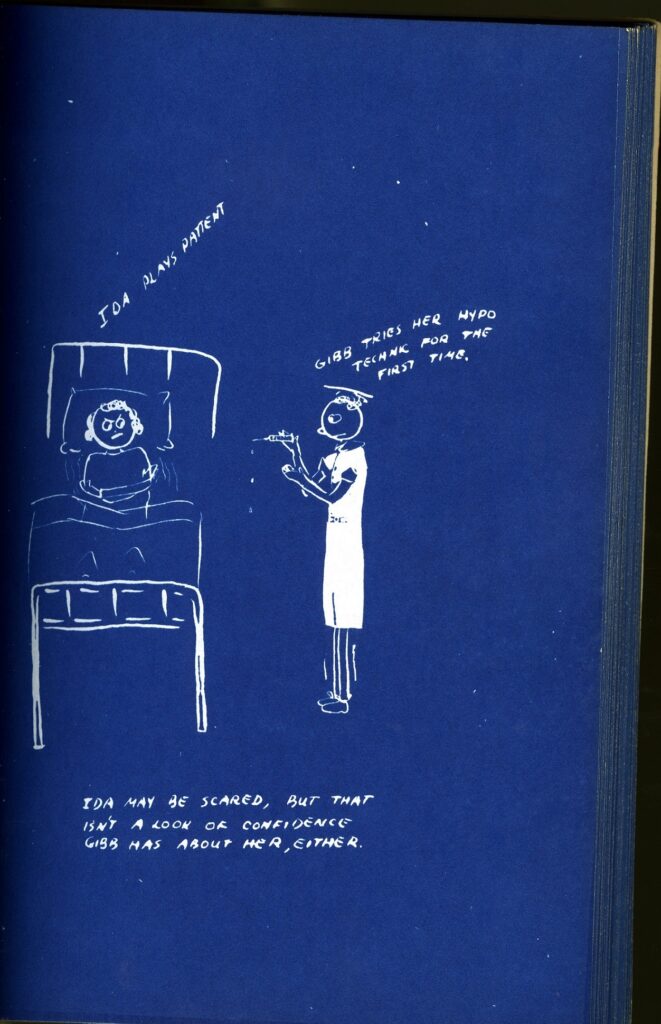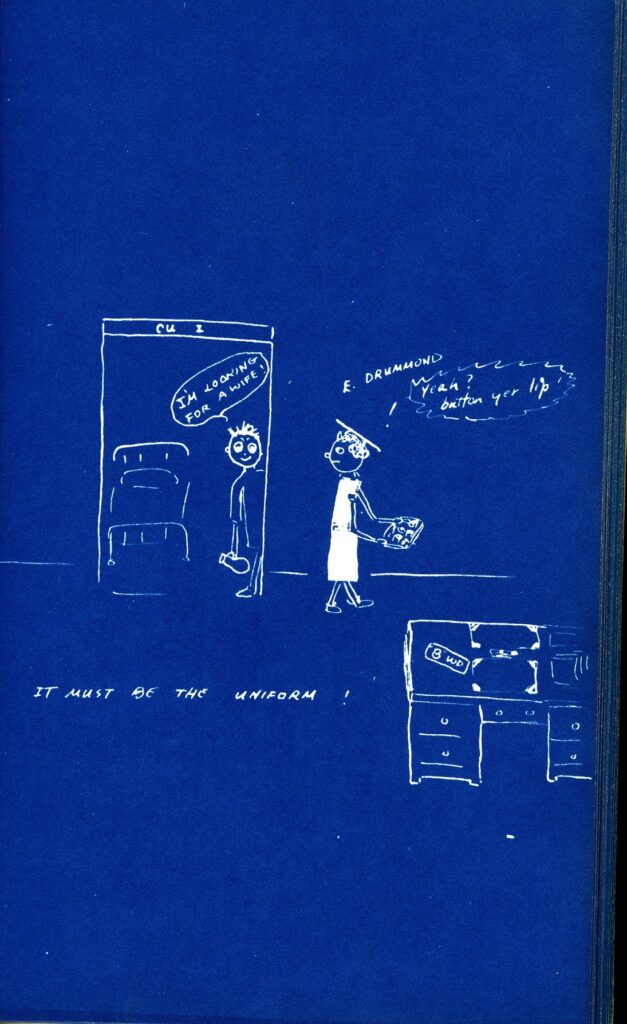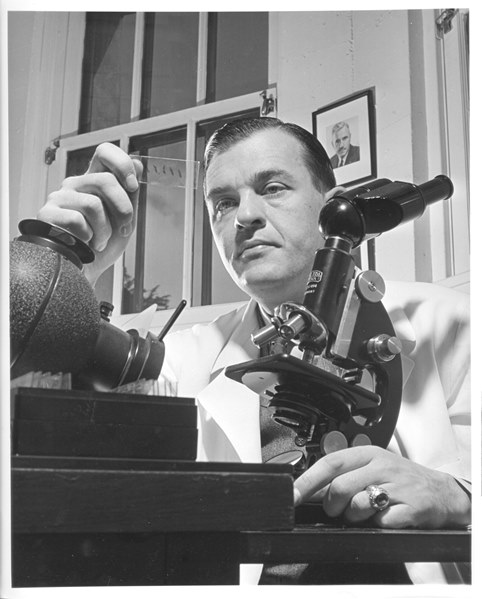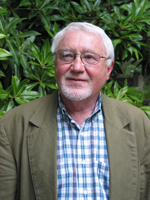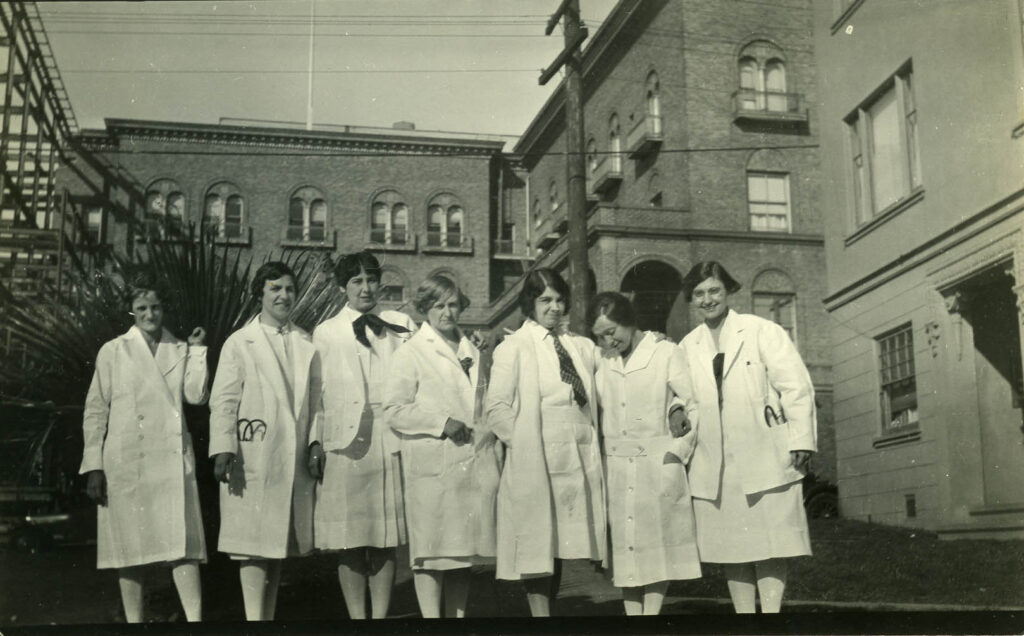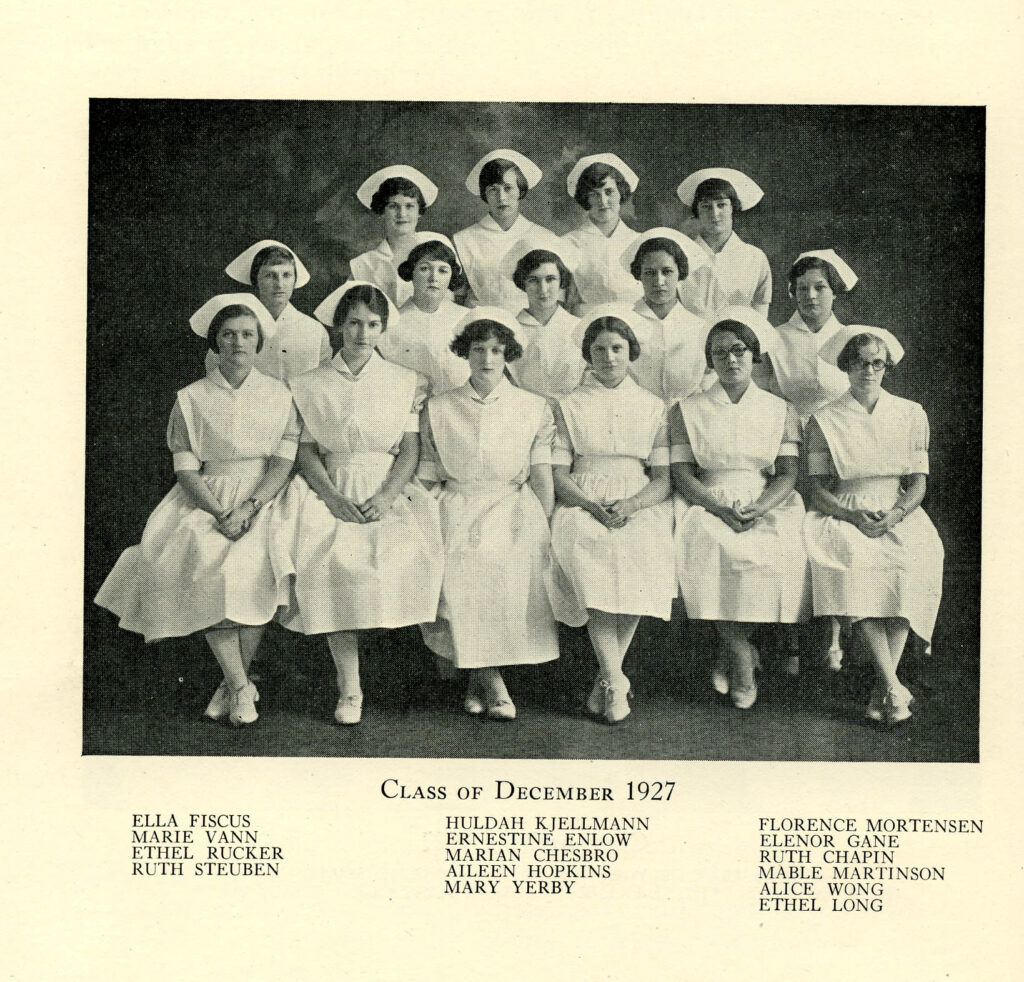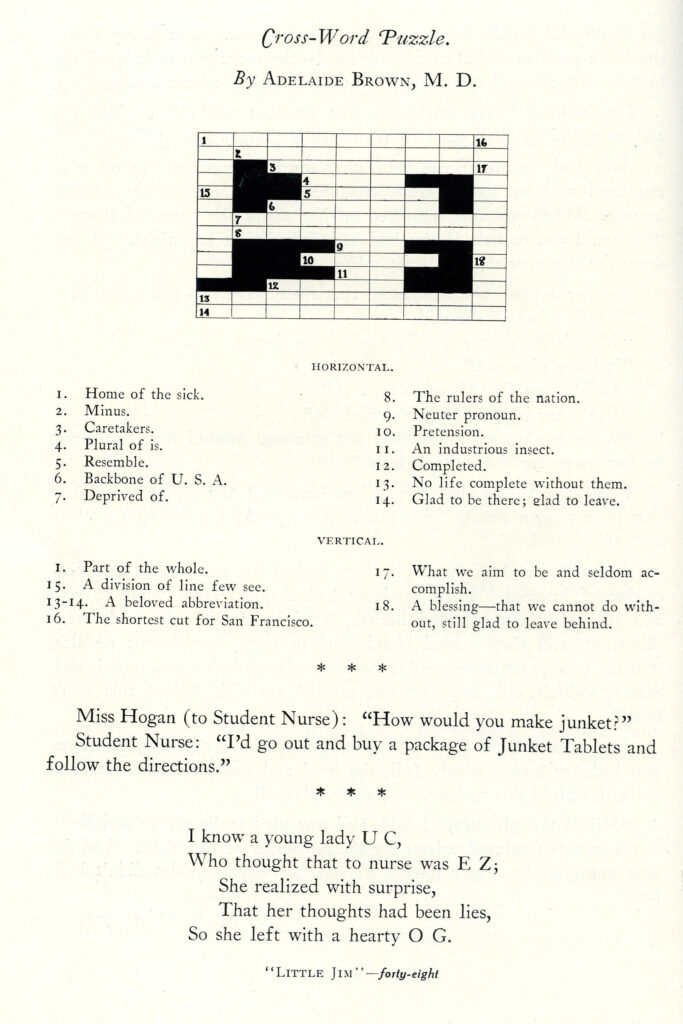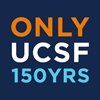In honor of Veterans’ Day this year, we bring you a scrapbook from our collection, titled Dental College Alumni Serving in the First World War, 1917-1919. The scrapbook is filled with letters written to Dr. Guy S. Millberry by both former and on-leave students during their military service. Millberry began working at UCSF in 1906, was appointed Professor in 1910, and became Dean of Dentistry in 1914– a role he continued in for twenty-five years.
The collected letters were written from a variety of places– Camp Greenleaf, GA; Camp Fremont, CA; Vancouver, WA; Royat, France; Oakland, CA; Camp MacArthur, TX; San Pedro, CA; Camp Lewis, WA; Khabarovsk, Siberia; New York, NY; Fort D.A. Russell, WY; Camp Greene, NC; Camp Shelby, MS; Camp Lee, VA; La Ferte, France. They were sent from forts, camps, ships, submarines, and hospitals. Most of the the letters are handwritten, a few are typewritten.
The soldiers ask Dr. Millberry for letters of recommendation, job advice, proof of graduation, if their leave of absence will be honored or extended to allow them return to school after the war ends, and give updates on their lives. One soldier, who wrote on September 21, 1918, included a copy his records detailing the dental work he did in one week.
A graduate of the 1917 UC College of Dentistry class, Edwin Busse, wrote a letter on October 18, 1918 from his station in Paimboeuf, France that included several photographs (the letter is transcribed in full at the end of this post). Busse is pictured in the 1917 Blue and Gold UC yearbook as a member of the Psi Omega dentistry fraternity. Below, a photograph of the Arch de Triumph in Paris, France. The caption reads: “Note how French have protected statue on right with sandbags.”
Included with same letter, a photograph of a “portable dental outfit.”
As well as a photograph of a “dental office at Paimboeuf.”
Clark R. Giles received his Degree of Doctor of Dental Surgery from UC in 1914 and had been an instructor in Prosthetic Dentistry here before serving in World War I. He wrote a detailed letter to Millbery on on October 7, 1918 from Royat, France describing the work that goes on at Base Hospital 30, the war, his recent leave, and even mentions Busse.
Royat France
Oct 7, 1918
My dear Dr. Millberry:
I have been a long time in writing to you but rest assured it is not because I have not thought many times of you and of the University.
We are located in Royat near Claremont-Ferrand a city of 60 thousand. We have the hospital well established in 17 or 18 summer hotels and at present have a little more than 1700 patients and within a few months expect to be able to care for 3 thousand if necessary.
Our department is very comfortably (not lavishly, naturally) equipped and just at present we are five dentists and six assistants. However we expect to lose our extra help ere long but in all probabilities they will be replaced by men from incoming organizations. We are kept very busy for example last month we saw some 650 patients and we try to have each man who comes in, go out with his mouth in a completed condition. We naturally have a great amount of routine work to do but mixed with it are also numerous very interesting wound and fracture cases from which we learn a great deal in the surgical and fracture line. All cases involving facial or other structures than the jaws or teeth are as you probably know handled in conjunction with the surgical department.
Click through to read the rest of the letter written by Giles followed by the letter from Busse that included the photographs, written to Millberry a week later than Giles’, also from France. Continue reading

